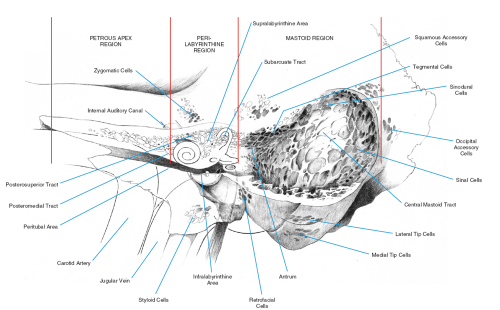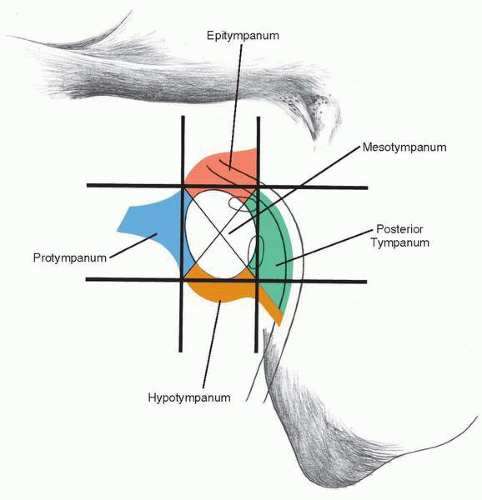The facial nerve exits the stylomastoid foramen on the lateral surface of the mastoid bone and is not covered by the enlarging mastoid process until approximately age 1½ years; hence it is susceptible to injury with a standard postauricular incision.
The tegmental and sinodural areas within the mastoid are common sites of recurrent, chronic, suppurative otitis media. The posterior fossa plate overlying the lateral venous sinus and the middle fossa plate overlying the temporal lobe define the sinodural angle of Citelli (
Fig. 11.4A). It is important to remember in the positioning of the patient and in exenterating the mastoid that the tegmental cells may lie medial to the most lateral overhanging extent of the temporal lobe (
Fig. 4B,C). In a well-pneumatized mastoid the
sinal cells may extend both lateral and medial to the sinus. Exenteration of these cells will more fully expose the posterior fossa (cerebellar) plate, providing better exposure in the transmastoid approach to the cerebellopontine angle. Exenteration of the lateral and medial
tip cells will define the digastric ridge between them, which followed anteriorly is an excellent landmark for the stylomastoid foramen. The
retrofacial cells extend from the central mastoid tract medial to the descending segment of the facial nerve to the infralabyrinthine and hypotympanic cells. In a well-pneumatized mastoid the inexperienced surgeon may follow a well-aerated central mastoid tract into the retrofacial cell tract, not recognizing that the facial nerve is lateral to these cells. Because the retrofacial cells drain into the infralabyrinthine cell tract, complete exenteration of the retrofacial cells in chronic otitis media is not as essential as it is for the central mastoid, sinodural, and tegmental cells. Conversely, exenteration of the retrofacial cell tract provides added exposure to the sinus tympani area for removal of hidden cholesteatoma.






